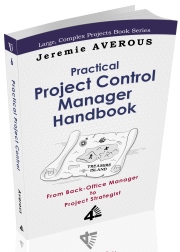How to Develop Information Systems in an Effective Manner for Project-Driven Businesses
In a series of White Papers, based on our extensive experience in this area, we cover challenges of Information Systems in project-driven organisations: from the overall architecture to systems implementation, development and ongoing management. In this third White Paper 2018-05 ‘How to Develop Information Systems in an Effective Manner for Project-Driven Businesses’ we cover the specific challenges of developing bespoke Information Systems (refer to White Paper 2018-04 ‘How to Implement Information Systems in an Effective Manner in Project-Driven Organisations’ for the case of implementing a commercially available software). After a first discussion on the choice between customising a commercial software and developing one’s own, the key success factors of successful developments are investigated.
 While developing systems in-house may be an adequate solution in some cases, it is generally not recommended except in specific cases.
While developing systems in-house may be an adequate solution in some cases, it is generally not recommended except in specific cases.
If this solution is chosen, the consequences in terms of additional cost for maintenance and upgrades must be understood. It is also essential to ensure that there is an ongoing and viable relationship with the developer to make sure that continuous improvements can be implemented as required by the business and to keep the underlying technological up to as technology evolves.
Key best practices include:
- Have the project driven by the business
- Choose a local provider to enhance communication
- Ensure the developer has a robust development framework
- Be aware that the productivity of a developer can vary by orders of magnitude
- Ensure that non-regression checks are properly performed for upgrades.
Find more about those best practices and more in our new White Paper 2018-05 ‘How to Develop Information Systems in an Effective Manner for Project-Driven Businesses’ .
If you can’t access the link to the white paper, copy and paste the following link in your browser: http://www.projectvaluedelivery.com/_library/2018-05_Systems_Development_v0b.pdf











How to Implement Package Management for SCM Post Award Management on Projects
Supply-Chain post-award management is an essential element of project success. For engineered equipment and subcontracts, proper management of the supplier/subcontractor and close coordination of all post-award activities is a must and it is recommended to use a package lead in charge of the internal/external coordination and follow-up. This function is generally covered by the Project Manager for small projects and not always well understood and implemented. In our new White Paper 2017-17 ‘How to Implement Package Management for Supply Chain Post Award Management on Projects’ we detail what are the key success factors for the implementation of the Package Management approach for large projects.
Our White Paper describes in detail the recommended organization for package management across the entire supply chain cycle, from pre-award to post-award activities. Success in a project takes a team, and package management is the appropriate way to make sure the entire team contributes to the success of Project Supply Chain Management activities.
Package Management is not often properly implemented on projects. Our new White Paper 2017-17 ‘How to Implement Package Management for Supply Chain Post Award Management on Projects’ explains the scope and give some recommendations for successful implementation. This implementation must be consistent and happen early in the project.
If you can’t access the link to the white paper, copy and paste the following link in your browser: http://www.projectvaluedelivery.com/_library/2017-17_SCM_Package_Management_v0.pdf